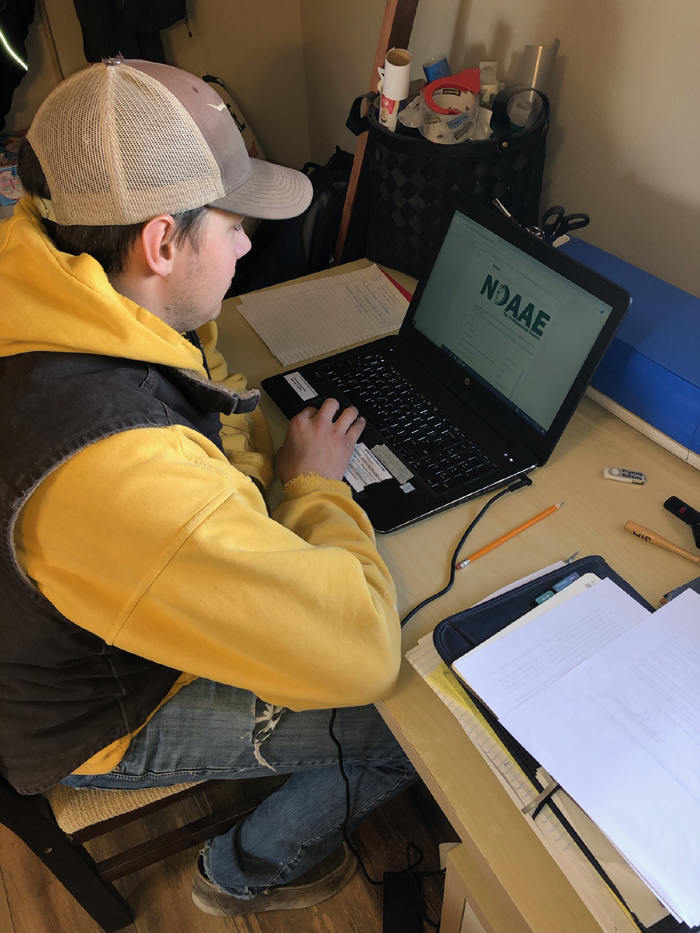April 21, 2020
Teaching ag despite COVID-19
Topic: Education
by Lisa Hauf, NDFB Public Relations Director
How do you teach a hands-on class through distance learning? Two North Dakota agriculture education teachers are taking on the challenge and finding ways to move forward with their curriculums as students finish out the school year.
For Misty Steeke, an ag education teacher and FFA Advisor for Scranton School, online learning through a Blackboard was already implemented in two of her classes before this all started. Blackboard is a tool that allows faculty to add resources, such as Powerpoint slides, video and audio for students to access online.
“So, when I had to take all of my classes and put them online, it made me think this will not be any different," said Steeke. “Well, having all the classes and not leaving my chair throughout the day is more of challenge than teaching online.”
For Colby Hennessy, an agriculture education teacher for Beulah High School and FFA Advisor, things were a bit of a whirl wind when he had to integrate all components of learning into online.
“When I first found out that we were going to be going to distance learning with all classes, all I could think was how are we going to incorporate all aspects into online,” said Hennessy. “The planning has completely changed as I have to keep in mind that not all students have the same access to the internet or supplies to complete things.”

Hennessy tries to incorporate ways agriculture affects everyone, to help students that might not have a large interest in production agriculture. The students learn agriculture mechanics, such as electricity, plumbing, welding, project planning, and wood working.
Not only has the way teaching changed, but their typical day is far from the same as well. For Steeke, she is used to a 40-mile commute, one-way, each day. Eliminating her drive time has been a nice little treat for her and now results in questions from her family such as, “Oh, can you come help me with a cow?”
During these uncertain times, it is easy to focus on the challenges, but challenges bring opportunity for success.
“One of the things that has surprised me the most is how so many students are being prompt on getting work turned in to us for corrections or help,” said Hennessy. “I have noticed the parents are in contact with teachers more, making sure their children are completing their work and thanking us for the effort that we have put in to completely changing how we are used to teaching.”
For Steeke, she used this opportunity to challenge her students. With the parent’s approval, the students were asked to track their activities and take pictures doing a family project. The projects have ranged from helping calve 200 heifers to getting farm equipment ready, building and staining decks, and painting projects for their moms.
“I see it being a positive that my students have been able to learn from their parents and put time in as a family,” said Steeke. “They have all taken an active role in learning while they are not in school and without the extra running for activities. They are taking the time to learn from their families and communicate with them more efficiently.”
